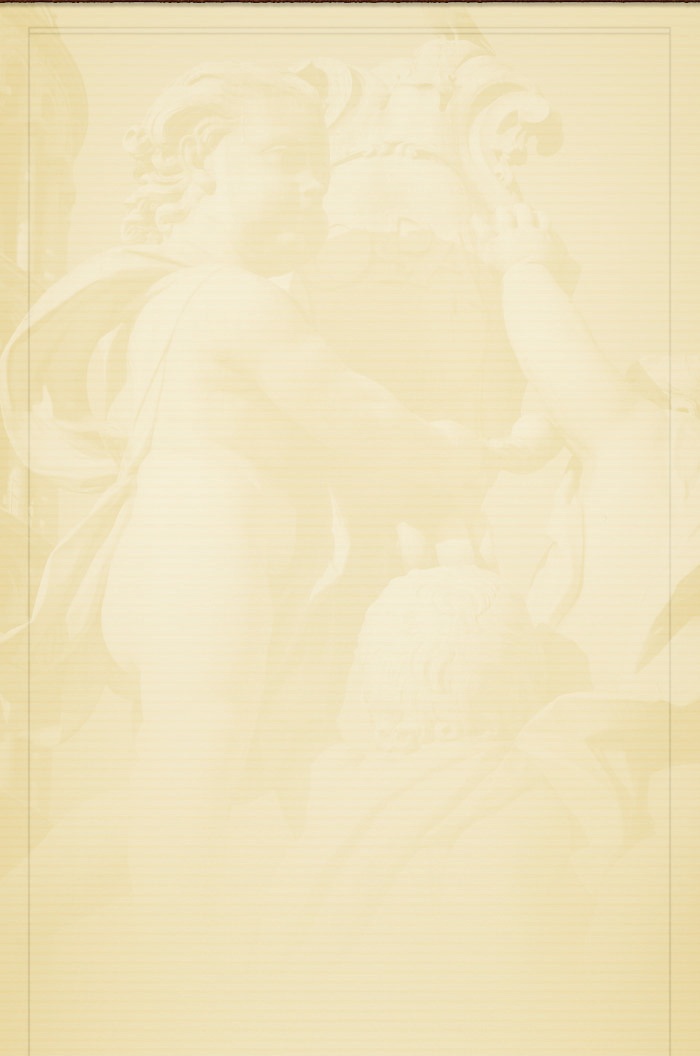Or, as you learn when you cross the border... Welcome to Wales!
When we first talked about spending time in Wales, I had a preconception of what we would see. Wales was all about coal and slate mining; poor, downtrodden ill-fed families who were covered in black dust and coughed a lot; subservient to and run by brutal English landlords; rugged, unwelcoming coastlines littered with castle ruins.
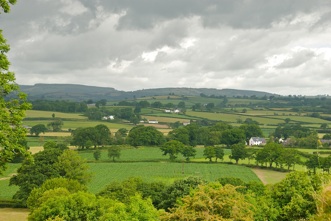
By the time you receive this (which we are sending from Ireland), we will have been in Wales twice. But still, we’ve only scratched the surface and intend to return, both to visit areas we’ve not yet seen and to go back to special places. We started out (towards the end of June) with 10 days crisscrossing southern and middle Wales. And then, as we headed toward our ferry crossing to Dublin, we spent another week in Wales, this time visiting the northern part of the country.
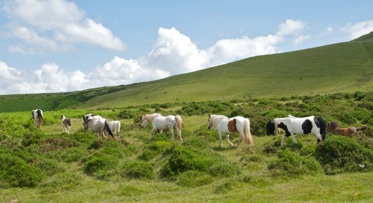
Dropping down into the Vale of Ewyas to head south toward Abergavenny, we found ourselves on the narrowest road we’d seen yet. Quite accustomed to small, this was tiny – and was lined with tree trunks. A bit harrowing, I’d say! The tree trunks were massive; I felt like Alice in the rabbit hole as we crept along brushing both side mirrors in the greenery.
We’d chosen this road in part because it followed a stream, and we were expecting lovely views. Hah! No views, and even if there had been any, no time to take eyes off the road. But one wandering eye did take in lots of ferns and foxgloves, very common in wet areas. Eventually, whew, we emerged into a more normal environment and were able to take a look around. And it was, indeed, very nice. We had arrived at Llanthony Priory, with its famous ruins, said to be as nice as Tintern Abbey and in a quieter setting. It was delightful to get out and poke around; there were horses waiting for some attention, and tea available as well.
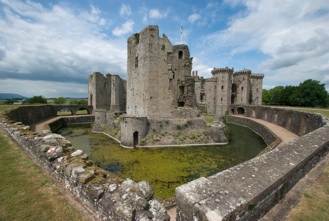
We wended our way over the hills and down into the little, narrow but lovely valleys, muttering about the narrow roads, this time with walls and row houses on both sides. We reached Swansea, which we had set as our goal because of the new National Waterfront Museum there, highly recommended by our guide book. Unfortunately, for us it was something of a disappointment, and we moved on after a brief visit.
The countryside continued to amaze and delight us, however. Every turn in the road, up over the hills and down into the valleys, was lovely, with sheep and horses and crops and not only foxgloves but now, surprisingly, lots of fireweed to look at. The weather continued to be bright and sunny, belying Wales’ reputation of wet weather all summer long.
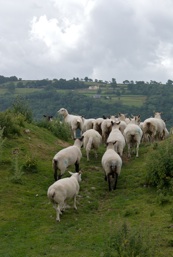
We keep thinking about West Virginia and the mining there. The color of the building stones in the towns was that same dark gray, and the houses tended to be more subdued in their decorations than in other areas. We weren’t especially interested in visiting the mining museums, or the pits that ran tours, so didn’t go there. But you couldn’t miss the slate roofs, the old equipment and building ruins, the evidence of former activity. We also thought about all those Welsh folks who had gone to Patagonia for the sheep, and how much at home they must have felt there.
We saw our first Welsh ponies. They are darling. And more sheep, more cows, more rabbits. And met wonderful Welsh people. They are friendly, happy to meet you, eager to know your story, quick to wave from their cars as they move aside for us on their little roads.
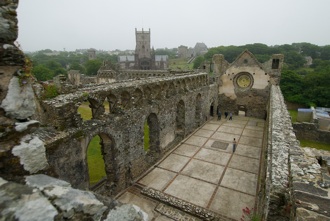
A bit further on we visited the old town of Newport and actually had a sunny day to enjoy the area. There’s not much here, but it’s a pretty spot and gives access to some neat things nearby. We wondered along the coast a bit, having lunch at a spot overlooking a craggy cove; then went up in the hills a short ways to the 4,000 year old burial site of Pentre Ifan with an enormous capstone still in place. It was a beautiful spot that we, naturally, had to share with some busily munching sheep.
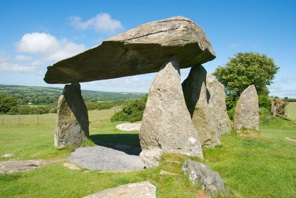
The Welsh countryside is so beautiful; I know I’m repeating myself. But we kept shaking our heads in amazement. Rick has now decided that when we give up traveling he wants to sell everything we have, buy a Morgan and set up housekeeping somewhere in Wales. The latest!
Our zigzag across the country now had us starting to move east again. We had chosen a small road (an ancient cattle-drovers’ path, according to the guidebook) that wound its way over the Abergwesyn Pass. It’s quite rugged, going through large forested areas and at times having a marked grade of 25%; the forestry commission maintains the area and has several side roads up into the trees where logging is being actively carried on. We spent the night on a bluff overlooking the valley way below. It was a quiet night, listening to the birds and enjoying the solitude. Reminded us of South America. This is “high country” in Wales, desolate and lovely.
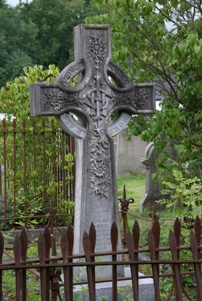
Huh – Offa who? Don’t know the story? No surprise, we didn’t either. Seems Offa of Mercia was ruler of central England in the late 8th century. Interestingly, he was a buddy of Charlemagne. He threw up this earthen dyke at the western boundary of his lands to keep the baddies out. The modern boundary between the two countries pretty much follows this line. You can still access the dyke in various places, and there is a walking path along much of it. The dyke went “from sea to sea” – from near Cardiff all the way north to the Irish Sea. It became a symbol of the antipathy between the two countries, and, of course ultimately didn’t do the job. Stone walls do not a country protect; think about the Maginot Line. Or Hadrian’s Wall, for that matter. In the end of course, it wasn’t the English needing protection from the “wild” Welshmen, but the other way around.
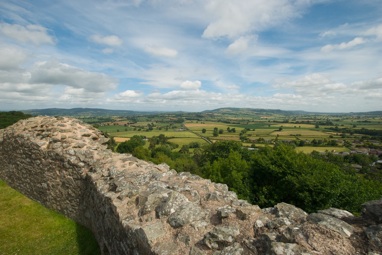
As we stood there chatting, Rick and I enjoyed the castle’s great view over the border back into England and the Shropshire Hills, our next destination. The next day we crossed back over the border again, and spent another three weeks enjoying England and sampling all the lemon curd we could find.
But then Ireland called and we crossed back into Wales, heading once again for Hay-on-Wye, this time with a stack of books in one hand and a list in the other. We seem to be spending the summer reading a lot of mysteries, and having recently discovered P.D. James, were determined to locate as many as possible of her Adam Dalgleish series. We found all but one, and a few other jewels to boot. We had a great time wandering this quite charming village (with 30 bookstores, mind you), spent the night in their pleasant car park, and took off the next day, after checking out the local fresh produce market. Very quickly we stopped in a town close by, which had yet another intriguing bookshop (and a cool church cemetery with several Celtic crosses); then, finally, we struck out westward through the middle of the country.
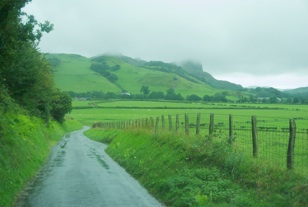
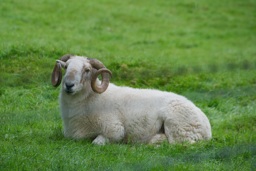
We continued north, up over one bluff and down the other side, with more 25% grades to enchant us. It was a misty morning along the coast, the road was tiny, and there was a ruined castle up ahead; pretty perfect. We enjoyed the rain, with soggy sheep chomping away on the hillsides. We said to each other, “Why would you live in England if you could live in Wales?” (One possible answer: the Welsh do have a rather strange relationship with consonants).
By now we were far enough north to have entered the area encompassed by the ring of castles erected by the English king Edward I in the late 1200’s in his war against the Welsh. Harlech, Caernarfon, Beaumaris, and Conwy were all within reach.
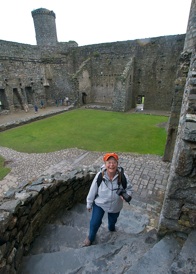
Harlech was located right along the ocean, on a bluff. We had presumed it was so situated as defense against attack from the sea, but found out the larger purpose was so they could resupply the castle more easily, and that the castles were fortified against the locals, not foreign invaders. Nonetheless, the views from on high were lovely up and down the shore, particularly when you set your sights high enough to avoid the caravan parks and housing developments spoiling the otherwise pristine shoreline.
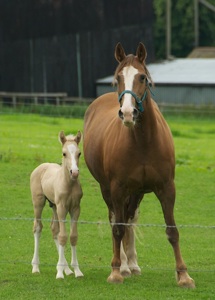
In the middle of all this we took a couple of days off, parked on top of a hillside in a farmer’s pasture. Dairy cattle were our companions, and one morning the mists even parted for us to (sort of) get a view of the mountains between us and Mt. Snowdon; the big guy was too shy. The day we left, we drifted through a little town that was having a border collie show (it was Sunday) and stopped to take in the scene. The puppies were adorable! Then through the village of Ruthin, a quiet charmer; we spent a delightful night near there, parked next to a field which contained a mare and her young foal. We spent lots of time just watching them.
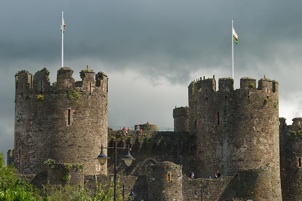
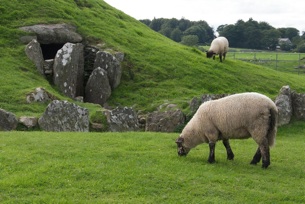
The siren call of Eire beckoned and we headed for the ferry at Holyhead. We left wishing we’d been able to spend more time in Wales, but delighted with the adventures we’d had. It’s a great country and well worth more time on a future visit.
At any rate it was time to be off to Ireland and more adventures. Back to the Euro and kilometers and another language sharing the road signs. We expect to be in Ireland for much of the rest of this rapidly disappearing summer. From there – not sure; we’ll keep in touch!
Rick and Kathy and the kids
